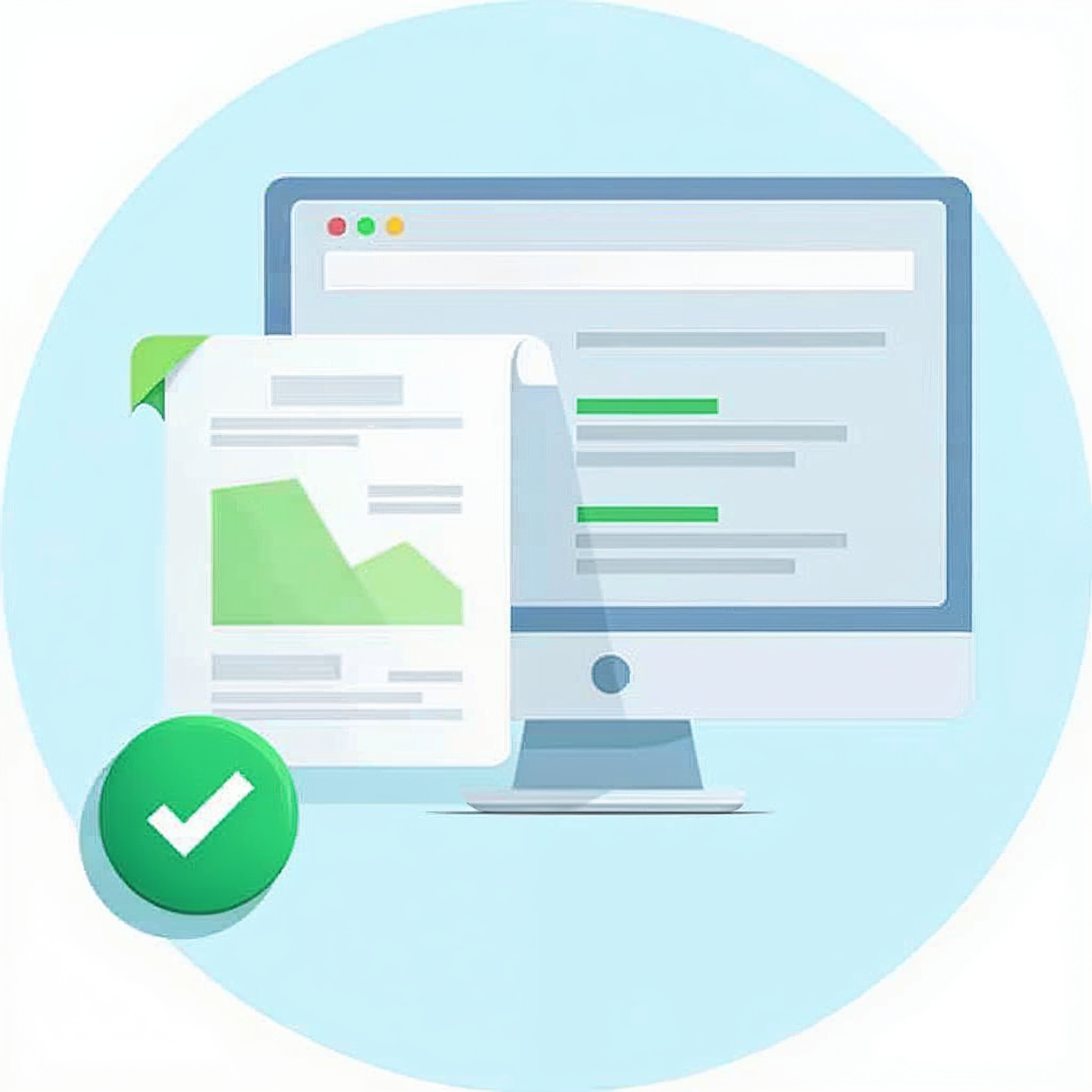Top Web Design Trends for 2025: What Every Designer and Business Owner Needs to Know
As we step into 2025, the world of web design is set to witness a fascinating evolution, presenting new opportunities for designers and business owners alike. Staying ahead of the curve means understanding the latest web design trends that will shape user experience and modern web design aesthetics. From innovative ways to enhance visual storytelling to incorporating cutting-edge technologies, the upcoming year promises exciting advancements that will influence how websites look and function. This article delves into these emerging trends, equipping you with the insights needed to keep your digital presence fresh and engaging. Whether you’re a seasoned web designer or a business owner planning to revamp your site, these insights will ensure your website remains at the forefront of 2025 web design.
Emerging Web Design Trends
As we look ahead to 2025, several key trends are shaping the future of web design. These emerging trends focus on creating visually appealing, personalized, and engaging user experiences.
Minimalist Aesthetics
Minimalist design continues to dominate web aesthetics in 2025. This approach emphasizes simplicity, clean lines, and ample white space, allowing content to take center stage.
Designers are focusing on essential elements, removing clutter and unnecessary features. This streamlined approach improves loading times and user focus.
Color palettes in minimalist designs are often muted, with occasional pops of bold hues for emphasis. Typography plays a crucial role, with sans-serif fonts remaining popular for their clean, modern look.
Minimalist designs also incorporate subtle animations and micro-interactions, adding depth without overwhelming the user. These small details enhance the overall user experience while maintaining a clean aesthetic.
AI-Powered Personalization
Artificial Intelligence is revolutionizing web design by enabling highly personalized user experiences. AI algorithms analyze user behavior, preferences, and demographics to tailor content and design elements in real-time.
This personalization extends to layout adjustments, content recommendations, and even color schemes. Websites can now adapt to individual users, creating a unique experience for each visitor.
AI-driven chatbots and virtual assistants are becoming more sophisticated, offering personalized support and enhancing user engagement. These tools can guide users through complex processes, answer queries, and provide recommendations.
Predictive design is another area where AI shines. By anticipating user needs, websites can preload content or suggest actions, streamlining the user journey and improving overall satisfaction.
Interactive Storytelling Techniques
Interactive storytelling is transforming how websites engage users. This technique combines narrative elements with interactive features to create immersive experiences.
Designers are using parallax scrolling, animated illustrations, and interactive infographics to bring stories to life. These elements guide users through content in a more engaging and memorable way.
User-generated content is being integrated into storytelling, allowing visitors to contribute to the narrative. This approach fosters a sense of community and increases user engagement.
Gamification elements are also being incorporated, turning passive browsing into active participation. Users can earn rewards, unlock content, or compete with others, enhancing the overall experience.
Enhancing User Experience
User experience remains at the forefront of web design in 2025. Designers are focusing on creating intuitive, accessible, and enjoyable interactions for all users.
Mobile-First Design
Mobile-first design has become the standard approach in 2025. This strategy prioritizes the mobile user experience, ensuring websites are fully functional and visually appealing on smaller screens.
Designers start by creating the mobile version of a website before scaling up to larger screens. This approach ensures that the core content and functionality are optimized for mobile users.
Responsive design techniques have evolved, allowing for more fluid transitions between screen sizes. Elements adjust seamlessly, maintaining consistency across devices.
Touch-friendly interfaces are a key consideration, with larger buttons and swipe-based navigation becoming more common. These features improve usability on touchscreen devices.
Accessibility Improvements

Web accessibility has taken center stage in 2025, with designers prioritizing inclusive experiences for all users, regardless of abilities or disabilities.
Color contrast ratios are carefully considered to ensure readability for users with visual impairments. Tools for adjusting text size and color schemes are becoming standard features.
Alternative text for images and captions for videos are now automatically generated using AI, improving the experience for users relying on screen readers.
Keyboard navigation has been refined, allowing users to access all website functions without a mouse. This improvement benefits users with motor disabilities and power users alike.
Intuitive Navigation Solutions
Navigation design has evolved to create more intuitive user journeys. Designers are focusing on simplifying site structures and providing clear pathways to information.
Mega menus and expandable navigation options are being used to organize complex site structures. These solutions allow users to access a wide range of content without feeling overwhelmed.
Search functionality has been enhanced with AI-powered predictive search and natural language processing. Users can find information more quickly and accurately.
Context-aware navigation adapts based on user behavior and preferences. Frequently accessed pages or relevant content are highlighted, streamlining the user experience.
Modern Web Design Elements
The visual language of web design continues to evolve in 2025, with new elements and techniques emerging to create striking and functional websites.
Bold Typography Choices
Typography has taken center stage in web design, with bold and expressive font choices becoming a key element of visual identity.
Large, eye-catching headlines are being used to grab attention and convey key messages. Designers are experimenting with unconventional font pairings to create visual interest.
Variable fonts are gaining popularity, allowing for dynamic typography that adapts to different screen sizes and user preferences. This technology enables more creative and responsive text designs.
Custom fonts and hand-drawn typography are being used to add personality and uniqueness to websites. These elements help brands stand out in a crowded digital landscape.
Dynamic Animations
Animations have become more sophisticated and purposeful in 2025 web design. These dynamic elements enhance user engagement and guide visitors through content.
Micro-animations are being used to provide feedback on user actions, such as button clicks or form submissions. These subtle movements improve the overall user experience.
Scroll-triggered animations reveal content as users navigate through a page. This technique creates a sense of discovery and encourages further exploration.
3D animations and WebGL are being used to create immersive experiences, particularly in e-commerce and educational websites. These advanced animations bring products and concepts to life.
Sustainable Design Practices
Sustainability has become a crucial consideration in web design. Designers are adopting practices that reduce the environmental impact of digital products.
Energy-efficient coding practices are being implemented to reduce server load and power consumption. This includes optimizing images, minifying code, and using efficient caching techniques.
Dark mode options are now standard, not just for aesthetic reasons but also to reduce screen energy consumption on OLED displays.
Designers are also considering the lifecycle of digital products, creating modular designs that can be easily updated and maintained without requiring complete overhauls.
2025 Web Design Technologies
Technological advancements are opening new possibilities for web design in 2025. These innovations are changing how users interact with websites and access information.
Progressive Web Apps
Progressive Web Apps (PWAs) have become mainstream, blurring the line between websites and native applications.
PWAs offer app-like experiences within browsers, including offline functionality and push notifications. This technology improves user engagement and retention.
Installation prompts allow users to add PWAs to their home screens, increasing visibility and accessibility. This feature is particularly valuable for businesses looking to maintain a presence on users’ devices.
Performance improvements in PWAs, such as faster loading times and smoother animations, are enhancing the overall user experience. These benefits are especially noticeable on mobile devices.
Voice User Interfaces
Voice user interfaces (VUIs) are becoming an integral part of web design, offering hands-free navigation and interaction options.
Voice search capabilities are being integrated into websites, allowing users to find information quickly and easily. This feature is particularly useful for accessibility and convenience.
Voice commands are being used to control website functions, such as adjusting settings or navigating between pages. This technology is improving the user experience for multitasking scenarios.
Natural language processing has advanced, enabling more accurate and context-aware voice interactions. Websites can now understand and respond to complex queries and commands.
Augmented Reality Features
Augmented Reality (AR) is enhancing web experiences by overlaying digital content onto the real world through device cameras.
E-commerce websites are using AR to allow customers to visualize products in their own spaces before purchasing. This feature is reducing return rates and improving customer satisfaction.
Educational websites are incorporating AR elements to create interactive learning experiences. Complex concepts can be visualized and explored in three-dimensional space.
AR-based navigation is being used in location-based websites, providing users with real-time directions and information about their surroundings.
Preparing for the Future
As web design continues to evolve, it’s crucial for designers and business owners to stay ahead of the curve and prepare for future developments.
Adapting to AI Advancements
Artificial Intelligence is set to play an even larger role in web design, requiring designers to adapt their skills and workflows.
AI-powered design tools are becoming more sophisticated, assisting with layout generation, color selection, and even content creation. Designers are learning to collaborate effectively with these AI tools.
Predictive design systems are emerging, using AI to anticipate user needs and preferences. This technology is enabling more personalized and efficient design processes.
Ethical considerations around AI use in design are becoming more prominent. Designers are developing frameworks to ensure responsible and transparent AI implementation.
Data Security Considerations
As websites collect and process more user data, security has become a top priority in web design.
Privacy-first design principles are being adopted, with transparent data collection practices and easy-to-understand privacy settings. Users are given more control over their personal information.
Enhanced encryption methods are being implemented to protect user data during transmission and storage. This includes advanced SSL protocols and blockchain-based security solutions.
Designers are working closely with cybersecurity experts to create user interfaces that encourage safe online behaviors. This includes clear security indicators and intuitive authentication processes.
Long-term Design Strategies
Web designers are adopting strategies to create flexible, future-proof designs that can adapt to evolving technologies and user expectations.
Modular design systems are being implemented, allowing for easy updates and scalability. These systems ensure consistency across platforms and reduce long-term maintenance costs.
Continuous user testing and feedback loops are being integrated into the design process. This approach allows for ongoing improvements based on real-world usage data.
Cross-functional collaboration between designers, developers, and business strategists is becoming more common. This holistic approach ensures that web designs align with long-term business goals and technological capabilities.

